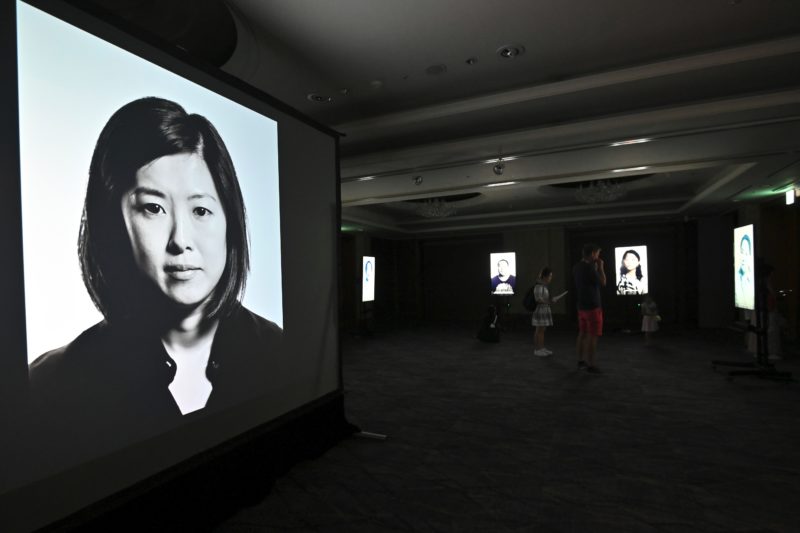Alternate lives: Korean orphans’ quests for answers
South Korea has sent some 180,000 children overseas over the years, mostly to the US (Jung Yeon-je)
Seoul (AFP) – On a summer’s day in 1985 a seven-year-old boy sat alone at a crowded bus station in Seoul, sobbing as he waited desperately for his mother to return.
Jo Youn-hwan was wearing a baseball uniform that his mother had bought him a few days before — the only gift she had ever given him.
She told him to wait for her before leaving him at the terminal. So he did, increasingly terrified as day turned to dusk.
“I’ll be a really good kid if only she chooses to return,” he promised himself, over and over again. “I’ll be a really, really good kid.”
She never did.
Jo was taken into South Korea’s orphanage system, but even though the country was for decades one of the world’s biggest exporters of children, he was already too old for most adoptive parents’ preferences.
Never chosen by a new family, he spent the rest of his childhood in what he describes as a vicious and rigidly hierarchical institution, before “aging out” at 20.
Children died of curable illnesses and older ones abused younger ones on a daily basis, he said.
“When a new kid arrived and cried because he was scared, the ritual was to cover his body with a blanket and beat him with a bat until he stopped,” he told AFP.
Rooms and clothes were filthy, the food often rotten and inedible.
For years, he wondered what would have happened if he had been adopted.
“My life wouldn’t have been so full of ‘han’,” he said — a Korean word describing unresolved sadness and resentment.
But many of those who were picked ask themselves similar questions.
– Better life? –
International adoption from South Korea began after the Korean War as a way to remove mixed-race children, born to local mothers and American GI fathers, from a country that emphasized ethnic homogeneity.
More recently the main driver has been babies born to unmarried women, who still face ostracism in a patriarchal society, and according to historians, are often forced to give up their children.
Most children remain institutionalised till adulthood as many South Koreans are reluctant to adopt. The country has sent some 180,000 children overseas over the years, mostly to the US.
“This logic of rescue remained strong in the minds of Americans and Koreans alike: rich Americans could give a Korean child a better life than they could ever have in Korea with poor parents or a single mother,” said Arissa Oh, who researches race, family and migration at Boston College in the US.
Among children placed in orphanages, the youngest, “most attractive and healthiest” were selected for overseas adoption, Oh told AFP.
The idea of rescue “erased the consumerism” of international adoption, providing justification for taking children from their country of birth, she added.
For many adoptees, that narrative has often led to a sense of alienation in their new lives.
“My whole life I have been told — by adopters, colleagues and at school — I should be grateful, and had I not been adopted I would’ve had to live in the streets as a prostitute,” Hanna Johansson, a Korean adoptee in Sweden, explained.
– ‘That could’ve been me’ –
Born in Seoul in 1960, Korean-American filmmaker Glenn Morey was abandoned as a newborn, and adopted at six months by a white American couple.
Growing up in Denver, Colorado, he was the only non-white student at any of his schools and struggled to fit in.
“Being Asian made me different, and it made me the subject of name-calling, bullying, and social exclusion,” he said.
“When you are experiencing difficulties growing up on an everyday basis, … you begin to wonder what things would’ve been like in Korea where you would’ve looked at least like everyone else.”
A part of his latest project, Side by Side, is an attempt to answer that question, interviewing 12 Koreans who “aged out”.
Two of them were in the same orphanage where he stayed before being sent to the US.
Both disabled, they told him of life on the streets, without a steady job, their next meal always in question and regularly encountering violence.
One told him: “I just want to have a normal life.”
“Every time we played it just ripped my heart,” said Morey, who hasn’t been able to track down his birth parents. “By the same token that could’ve been me, and those struggles could’ve been mine.”
– ‘Why did she lie?’ –
Abandoned children can face lifelong stigma in the South where known family lineage is important.
They face discrimination when applying for jobs and in relationships, Jo said, some keeping their years in orphanages a secret from in-laws, spouses and employers.
Jo’s case is, by his own admission, unusual. He did well academically and his orphanage director offered to pay for his university tuition.
He is now a taxi driver, married with children of his own, and has set up the South’s first-ever rights group for aged-out Koreans.
A survey found that 93 percent of members were either convicted criminals, had been homeless or worked in illicit industries.
“This is our reality,” he said.
Last year he finally found his mother, but it didn’t bring him resolution.
He was told that his father was an abusive gambling addict, and his mother sought to escape by marrying another man, deciding that to do so she needed to hide her past.
Jo said: “Why didn’t she at least let me live with my father or grandmother? Why did she lie and tell my father I was dead?”
“I’m still struggling to digest this. It’s been very, very hard.”
Disclaimer: Validity of the above story is for 7 Days from original date of publishing. Source: AFP.


